Leather gloves are a timeless accessory known for their durability, comfort, and style.
However, finding the perfect fit can be challenging, as leather is a natural material with unique characteristics.
Today, I will walk you through the process of stretching leather gloves to achieve a better fit.
Key takeaways:
- Leather Type Matters: Softer leathers like kidskin are easier to stretch compared to tougher leathers like cowhide.
- Natural Stretching is Effective: Leather gloves often stretch naturally over time through regular wear, especially with movements like squeezing laced fingers.
- Use Caution with Moistening Techniques: A solution of water and isopropyl alcohol can help stretch leather, but it’s essential to apply it sparingly and evenly to avoid damage.
- Condition Regularly After Stretching: Applying a lanolin-based conditioner post-stretching helps maintain leather’s elasticity and prevents drying or cracking.
- Be Realistic with Stretching Goals: Significant size changes aren’t possible; the objective is to achieve a slightly more comfortable fit without compromising the integrity of the gloves.
Leather Properties
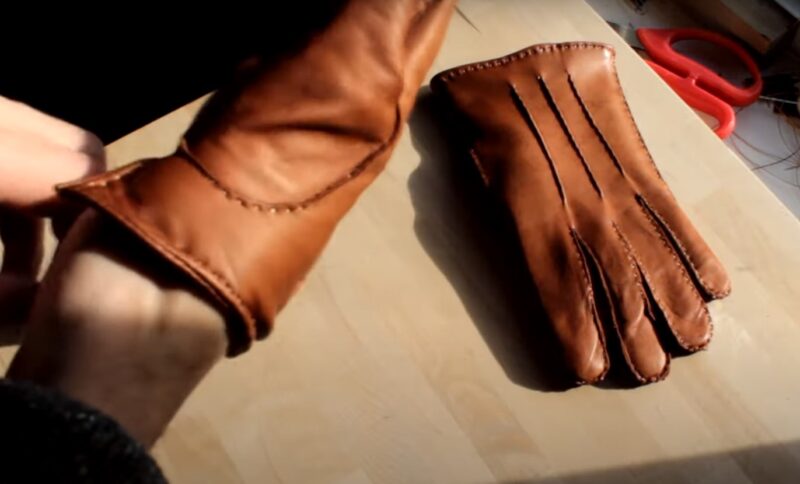
Leather is a versatile material, but its ability to stretch varies depending on its source and treatment.
Glove leathers like kidskin are inherently softer and more pliable, making them easier to stretch compared to the sturdier cowhide.
This fundamental understanding is crucial when attempting to modify the fit of your leather gloves.
Historical Insights: Victorian Glove Stretchers
In Victorian times, glove stretchers were a popular tool to adjust the fit of leather gloves.
These devices, now rare and often considered collector’s items, were specifically designed to gently expand the leather without damaging it.
Their rarity today means we must look for alternative methods to achieve similar results.
Modern Methods of Stretching Leather Gloves
1. Natural Stretching Through Wear
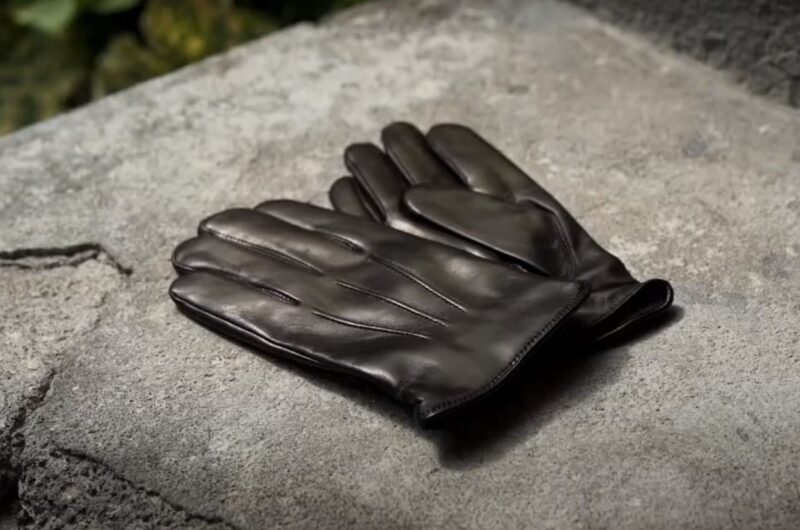
Leather gloves typically stretch and mold to the wearer’s hands over time.
Activities like squeezing laced fingers tightly can expedite this natural process.
This method is gentle and maintains the integrity of the leather, though it may require patience.
2. Using a Water and Isopropyl Alcohol Solution
A mixture of water and isopropyl alcohol can be effective in stretching leather gloves.
This solution temporarily softens the leather, allowing for a more malleable fit.
It’s important to use this method sparingly and carefully to avoid overstretching or damaging the gloves.
3. The Role of Shoe Stretching Sprays

Shoe stretching sprays, which are designed to soften and expand leather, can also be used on leather gloves.
These sprays typically contain chemicals that relax the leather fibers, making it easier to stretch the material to your desired fit.
4. Conditioning with Lanolin-Based Products
To prevent the leather from shrinking and maintain its suppleness, using a lanolin-based conditioner is recommended.
This type of product nourishes the leather, ensuring it remains flexible and less prone to cracking or stiffening over time.
Practical Steps to Stretch Leather Gloves

Step-by-Step Guide
- Identify the Tight Areas: Before beginning the stretching process, wear your gloves and identify which areas feel too tight.
- Prepare the Stretching Solution: If using the water and isopropyl alcohol method, mix equal parts of both in a spray bottle.
- Apply the Solution: Lightly mist the tight areas of the gloves with the solution. Avoid soaking the leather.
- Gently Stretch: Using your hands, gently stretch the moistened areas. For a more uniform stretch, wear the gloves until they dry.
- Condition the Leather: After stretching, apply a lanolin-based leather conditioner to maintain the gloves’ elasticity and prevent drying.
Tips for Success
- Test on a Small Area First: Before applying any solution to the entire glove, test it on a small, inconspicuous area to check for any adverse reactions.
- Avoid Overstretching: Be cautious not to overstretch the leather, as this can lead to irreversible damage or misshaping.
- Dry Naturally: Allow the gloves to air dry naturally. Avoid heat sources, as they can cause the leather to become brittle.
Limitations and Considerations

Realistic Expectations
It’s essential to have realistic expectations when stretching leather gloves. While a small degree of stretching is possible, significantly increasing the glove size is not feasible.
The goal should be to achieve a more comfortable fit rather than a complete size alteration.
Long-Term Care
Regular maintenance, including proper cleaning and conditioning, is vital for preserving the quality and fit of your leather gloves.
This ongoing care not only keeps the leather in good condition but also prevents the need for excessive stretching in the future.
Advanced Techniques for Stretching Leather Gloves
Professional Assistance
Seeking professional help can be a wise choice, especially for expensive or delicate gloves.
Leather experts and cobblers have the tools and experience to stretch leather effectively without causing damage.
Utilizing Glove Stretchers
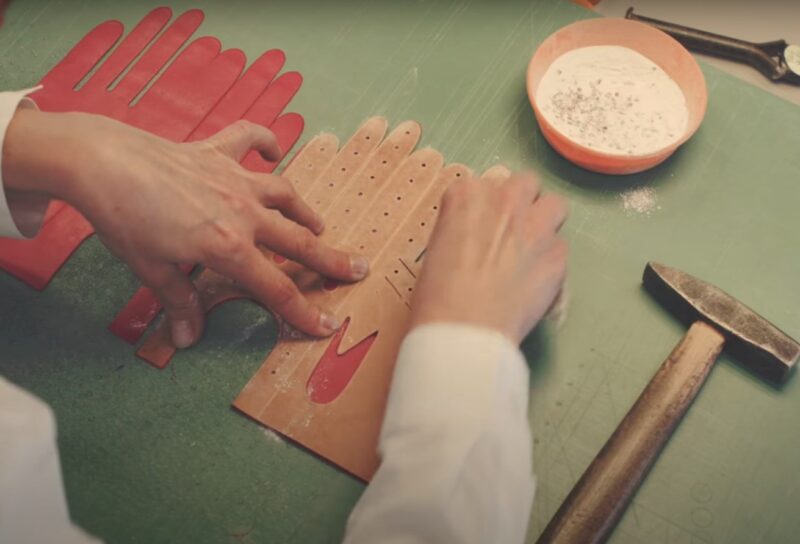
Though rare, Victorian-era glove stretchers can still be found in antique shops or online.
These can be a valuable tool for gently stretching leather gloves, especially for collectors or enthusiasts who prefer traditional methods.
DIY Stretching Tools
In the absence of traditional glove stretchers, household items like spoon handles or small, rounded objects can be used to gently work the leather.
This method requires caution to avoid overstretching or tearing the material.
Innovations in Leather Stretching
Modern Stretching Devices
New innovations in leather care include modern stretching devices designed for shoes and gloves.
These tools offer a more controlled and even stretching process, reducing the risk of damaging the leather.
Experimenting with Heat
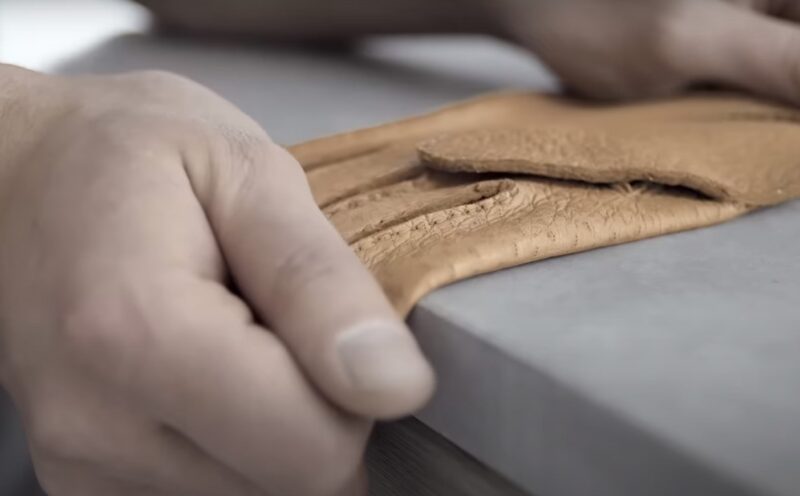
Some leather stretching techniques involve the careful application of heat. This should be done with extreme caution, as excessive heat can dry out and crack the leather.
A warm, damp cloth applied to the glove’s surface can make the leather more pliable for stretching.
Alternative Stretching Solutions
Apart from water and isopropyl alcohol, other solutions like leather stretching sprays or specialty products can be used.
These are formulated specifically for leather, ensuring a safe and effective stretching process.
Post-Stretching Care
1. Monitoring the Leather’s Condition
After stretching, it’s important to monitor the leather’s condition. Look for any signs of wear or damage and address them promptly.
Regular inspections ensure the gloves remain in good condition and retain their shape.
2. Reinforcing Stretched Areas
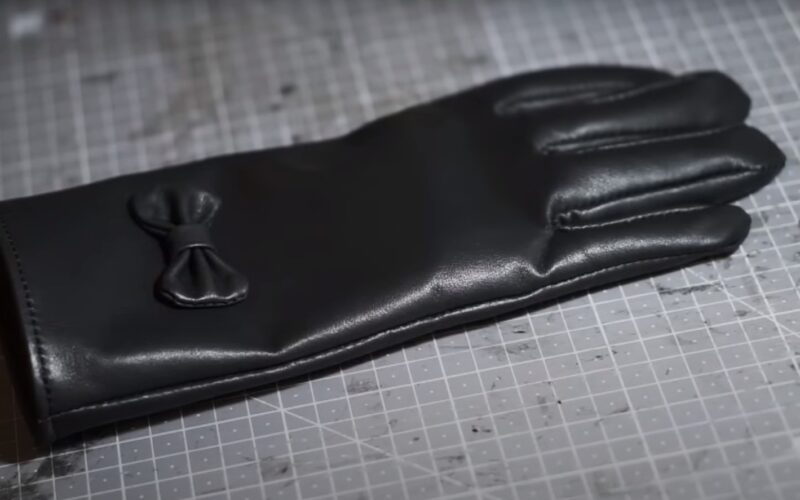
In some cases, stretched areas might become weak or thin. Reinforcing these areas with leather conditioners or protectants can help maintain their integrity and prolong their lifespan.
3.Storing Leather Gloves Properly
Proper storage is crucial for maintaining the shape and condition of stretched leather gloves.
Store them in a cool, dry place away from direct sunlight. Use a glove form or stuff them lightly to maintain their shape.
Troubleshooting Common Stretching Issues
- Overstretched Leather: If the leather becomes overstretched, it might be challenging to revert to its original shape. In such cases, consulting a professional for repair or reinforcement is advisable.
- Uneven Stretching: Uneven stretching can result in a misshapen glove. To avoid this, stretch the gloves gradually and symmetrically. Paying attention to the stretching intensity and duration is key to achieving an even result.
- Preventing and Addressing Cracks: Cracked leather is a common issue after stretching. To prevent this, use a quality leather conditioner regularly. If cracking occurs, a leather repair kit or professional restoration might be necessary.
FAQs
Can I use a hairdryer to stretch my leather gloves?
It’s not recommended to use a hairdryer as the direct heat can damage the leather.
If you must use heat, do so with extreme caution and keep the dryer at a low setting, moving constantly to avoid concentrating heat in one area.
Will leather gloves continue to stretch over time?
Yes, leather gloves will naturally stretch and conform to your hands over time through regular wear.
Can I stretch synthetic leather gloves the same way as real leather?
No, synthetic leather reacts differently to stretching methods used for real leather. It’s less pliable and can be damaged more easily, so stretching techniques for real leather are not advisable for synthetic variants.
Are there any risks to using alcohol solutions on colored leather gloves?
Yes, alcohol solutions can potentially discolor or fade the dye in colored leather gloves.
Always test a small, inconspicuous area first before applying it to the entire glove.
Is it possible to shrink leather gloves if they become too loose?
Leather can shrink slightly when exposed to water and heat, but this is risky and can damage the gloves.
It’s better to have them professionally altered if they become too loose.
How often should I condition my leather gloves after stretching them?
It’s advisable to condition leather gloves every few months or whenever they start to feel dry, especially after stretching, to maintain their elasticity and prevent cracking.
Final Words
Stretching leather gloves is a delicate balance between art and science. By understanding the nature of the leather, employing the right techniques, and maintaining realistic expectations, you can achieve a more comfortable fit for your gloves.
Remember, the key is to be gentle and patient, allowing the leather to adapt gradually to your hands.
With proper care and attention, your leather gloves can provide comfort, style, and durability for years to come.
